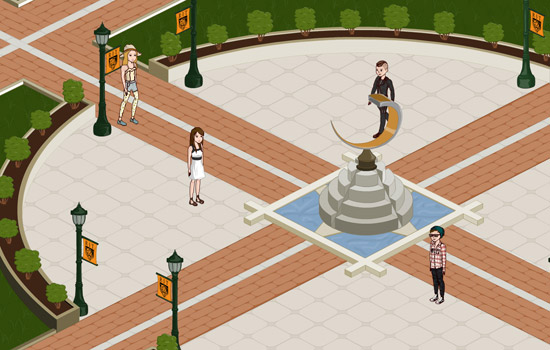Versace, your way! RIT students design fashionable business game
StoreWorld provides online entertainment designed to operate on Facebook
In the online game StoreWorld, players own a clothing and accessories store and must advertise, operate, manage and compete against other retail shops and their owners.
Attention shoppers! StoreWorld is a place where fashion means business.
The virtual clothing store, designed to operate on Facebook, will be ready for action during the Imagine RIT: Innovation and Creativity Festival on May 5. It will be presented at four locations: first floor in the Gordon Field House and Activities Center; artistic alley in Frank E. Gannett Hall, room 1217; lobby in Lowenthal Hall; and computer zone in Golisano Hall, room 2000.
StoreWorld is reality driven and similar to games on Facebook such as FarmVille and It Girl. A multidisciplinary effort, the game was developed by RIT faculty and students from the E. Philip Saunders College of Business, the B. Thomas Golisano College of Computing and Information Sciences and the College of Imaging Arts and Sciences.
“The premise is that each player has inherited a men’s and women’s clothing and accessories store from their parents and they have to learn how to advertise, operate, manage and compete against other retail shops and their owners,” says Steven Gold, economics professor in the Saunders College. “They get to name their store, decorate it, pick out and purchase inventory and run the daily operations. They can meet other retail owners in the plaza to discuss sales and business.”
Win or lose, virtual entrepreneurs will come away with fashion sense and business acumen—without losing a penny of their own money.
“StoreWorld is marching along, virtually bug-free with recent enhancements to the financial management portion of the game,” says David Schwartz, associate professor in the School of Interactive Games and Media in the Golisano College. “Players will work on a team of four to manage a single store, maintain inventory and minimize losses in a competition to see who can run the most profitable store. We have a target release date for StoreWorld on Sept. 1.”
The game was quite popular at the 2011 Imagine RIT: Innovation and Creativity Festival and won a sponsor prize from Hewlett Packard. “Games like this cost $6 to $9 million to produce by private companies, so the competition is fierce,” Gold explains. “If HP gave us an endorsement, it was because the game was creative enough and had the promise to make an impact in commercialization.”









